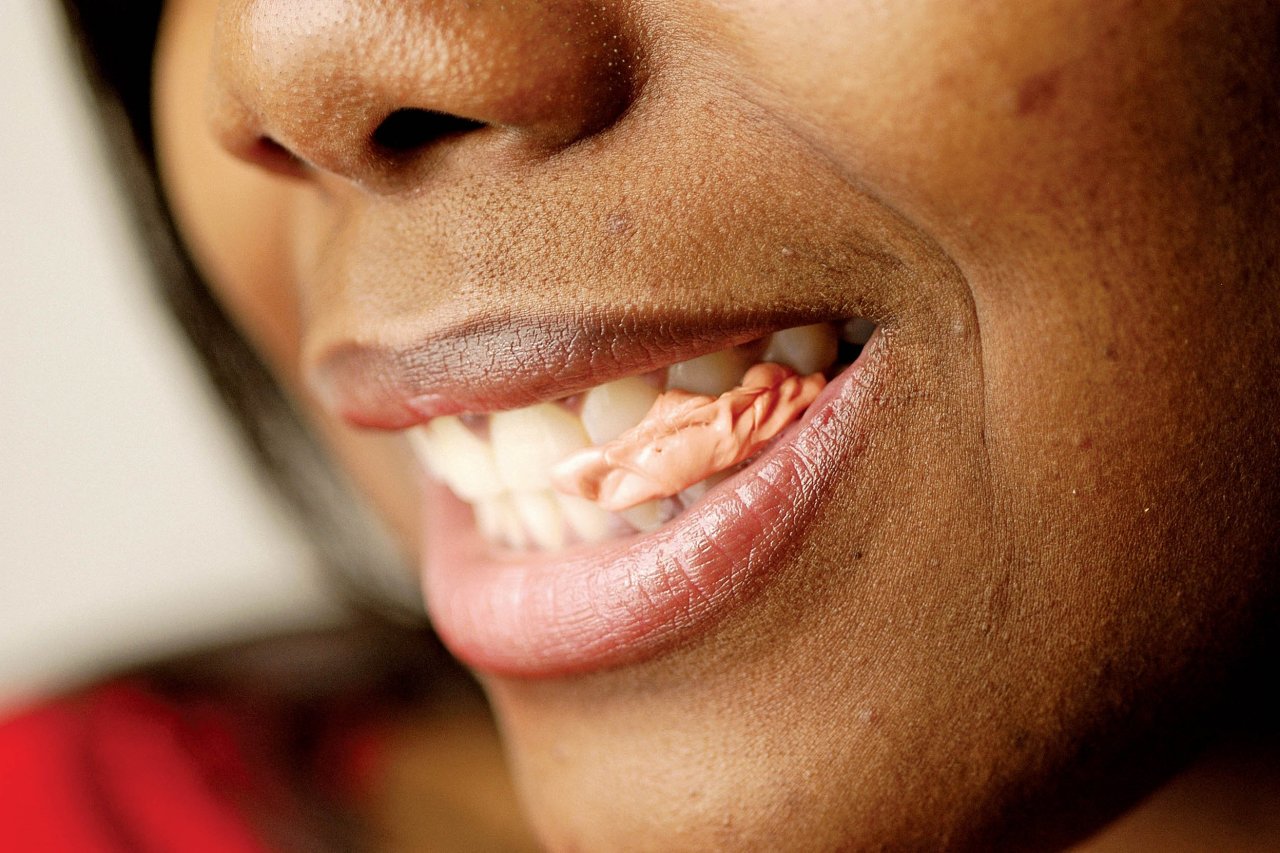One day in 2002, University of Pennsylvania physiologist Larry Rome got a call from the military. The caller said special forces in Afghanistan were carrying around big backpacks, weighed down with batteries for their equipment, and asked, Did Rome have any idea how to convert the energy the soldiers were expending humping that stuff around into electricity?
Rome, whose last major project was a submarine that propelled itself by undulating like a marine creature, had "never worked with humans or backpacks," he says. But the mystery caller must have had a premonition: A dozen years later, Rome designed a backpack that creates electricity when somebody straps it on and walks around. A model was tested recently by Marines at Camp Pendleton in California, and it seems likely that someday soon the invention will be deployed by U.S. troops in remote regions, in order to produce electricity when they are far from resupply centers.
Rome ended up spinning off his idea into a company called Lightning Packs. The backpack produces about 30 watts when somebody wears it on a brisk march—enough to charge about six cellphones. You can't buy one just yet, but he hopes they will be available for commercial purchase in the next couple of years.
The backpack contains two frames: one strapped to the back and a second to the weight-bearing pack. They meet in a kind of spring-loaded track that allows the pack to bounce up and down as a person walks. Although it may sound cumbersome, it actually makes walking quickly or running easier, because the springs absorb the shock of each step. "Already I can feel the amount of effort that I'm putting into keeping the pack from moving around is less than I would if the frame was fixed," gunnery sergeant Nelson Martinez said of the pack in a segment on Marines TV.
Earlier this year, Marines at Camp Pendleton also tested another related product: a knee brace that generates up to 12 watts of power from walking. Using sensors, it can tell when the leg muscles are "braking," and it absorbs this mechanical energy to produce electricity, said biologist Max Donelan, who founded the company that makes it, Bionic Power. In this way, it can actually make walking downhill easier by lowering the strain needed to slow down. "It's like a Prius," Donelan says—referring to the way that the hybrid car generates electricity when the brake is applied, by converting mechanical energy into electricity inside its motor. The product is currently in a prototype phase and will soon be tested by the Canadian and U.S. military, Donelan adds.
The appeal of harnessing the energy expended during walking, especially while in remote regions, is obvious. But there are plenty of other occasions where it would be ideal to gather power from the human body itself. Implants like pacemakers, for example, have batteries that must be replaced periodically, requiring potentially dangerous surgeries. Eliminating the battery would reduce the long-term risk of complications significantly.
That's why scientists and engineers are increasingly trying to derive electricity from the body's many movements, ranging from locomoting to dancing to chewing. One of the most promising current research directions is in piezoelectric materials—devices that can create electricity when they are bent or squashed. They can be quite small—in some cases, tiny enough to be placed inside the body.
There are several types of materials with piezoelectric properties (the first part of the word, pronounced pee-etz-oh, comes from the Greek piezein, meaning "to press" or "squeeze"). These include natural crystals as commonplace as quartz and synthetic materials like zinc oxide.
The piezoelectric effect was discovered in the late 1800s, and its first applications came about in the early 1900s. (One of the earliest uses of the piezoelectric effect was to help convert radar and sonar waves into electrical signals.) But it's only in the past few decades that these materials have been tested for their ability to harness energy. That's because they produce relatively little electricity—in the range of tens to hundreds of microwatts. That's not nearly enough to power something like a smartphone.
On the other hand, many sensors and microchips are now small and efficient enough to be powered in this way. There are already commercially available piezoelectric light switches, for example. Instead of a switch wired into the electric grid, these devices harness the kinetic power generated by the actual flick of the switch to wirelessly turn on a light.
Then there's the pacemaker. It requires about 10 microwatts to run, a relative pittance. And it is next to a continuous source of movement: the heart. Why not harness that energy?
In a recent study, John Rogers, a materials scientist at the University of Illinois, and his colleagues placed piezoelectric materials over the exterior of pig hearts and found that they could create enough electricity to run a pacemaker. "You have to be careful, but it is possible to create enough energy to run a pacemaker from the movements of the heart," Rogers said. Due to the long amount of time needed to gain Food and Drug Administration approval for human testing, he doesn't foresee a self-charging pacemaker hitting the market within the next five years. But he is still optimistic that the work will lead to practical applications in the near future.
Researchers at the University of Bern, Switzerland, used a different technique, similar to that of a self-winding watch, to wind a spring in a contraption the size of a pacemaker battery. Placed on a pig's beating heart, this gizmo produced more than enough electricity to power a pacemaker.
Hani Haider, a professor in the department of orthopedic surgery and rehabilitation at the University of Nebraska Medical Center, was the first person (to his knowledge) to use piezoelectric materials in a medical device, he says. More than a dozen years ago, he used these power-generating materials to make self-powered monitors to measure the forces encountered within a man-made knee. He says he stopped the work due to a lack of funding, but other groups picked up where he left off and have shown that similar technology could produce enough power to wirelessly transmit information about conditions within a fake knee.
Having such sensors installed in artificial joints would actually be a big deal, says MIT researcher Joseph Paradiso, who wasn't involved in Haider's work; they could potentially spot small problems with the prosthetics before they become calamitous. For example, these self-powered monitors could flag a condition called aseptic loosening (where the connection between the joint and bone is weakened), alerting a doctor in time to perform a relatively simple exterior repair before a costly and dangerous total replacement of the artificial joint would be required, Haider says.
One of the pioneers in the field, Georgia Institute of Technology researcher Zhong Lin Wang, has created a variety of devices that harness energy from bodily movements, such as a thermometer incorporated into fabric that can powered by a "few flicks of the shirt," he says. He has also made a heart-rate monitor that can be placed over the skin and is powered by normal, everyday movement.
Wang's work has also shown that it is possible to harvest significant amounts of energy from falling raindrops. Embedding this technology in, for example, roofing material could enable homes to passively harvest significant amounts of energy.
In a similar application, several European nightclubs—such as the aptly named "Watt" club in Rotterdam, Netherlands—have embedded piezoelectric materials into dance floors, turning the vibrations of gyrating hips into electricity to power strobes and other lights. And similar technology has been used at several Japanese rail stations to convert heavy foot traffic into power for lights and ticket stations.
Joe Briscoe, a postdoctoral researcher at Queen Mary University in London, adds some rock and roll to the discussion. He and his colleagues have shown that a sheet of a crystalline material called zinc oxide (also found in sunscreen and used in many industrial processes) can produce a very small amount of electricity from sound waves, although "you'd need some pretty loud rock to get useful levels of power," he says.
In another noteworthy application, engineer Jérémie Voix has shown that it is possible to harness energy from everyday movements of the jaw, like speaking and chewing. The researcher, from the École de Technologie Supérieure in Montreal, was looking for a way to power a "bionic ear" that he and his colleagues were working on and decided to put piezoelectric materials in a chin strap.
Only a proof of concept at this point, the material generated about one-20th of what the team members would need to power their hearing-aid-like device. But Voix says they could easily scale up the power by increasing the thickness of the material. And the cumbersome design might not really matter, since the ear device is geared toward pilots and emergency responders, who would likely be wearing headgear equipped with chin straps already.
Of course, with all due respect to Voix's cool invention, talk is cheap. Piezoelectrics energy harvesters haven't yet made a dent in the real world, for the most part. On the other hand, all of the researchers and industry reps interviewed for this story agree that piezoelectrics is very much poised to become a real commercial force—perhaps within the next three to five years. The gait-powered backpacks and knee braces look likely to break through even sooner.
It is perhaps telling that these two last products don't use piezoelectrics and produce somewhere around 1,000 times more electricity. But as electronic devices continue to shrink and need less juice to work, and piezoelectronic ones are tweaked to produce more power, the technologies will likely meet in the middle. "You have to find the right spot," Rogers says. "But the power is there."




























